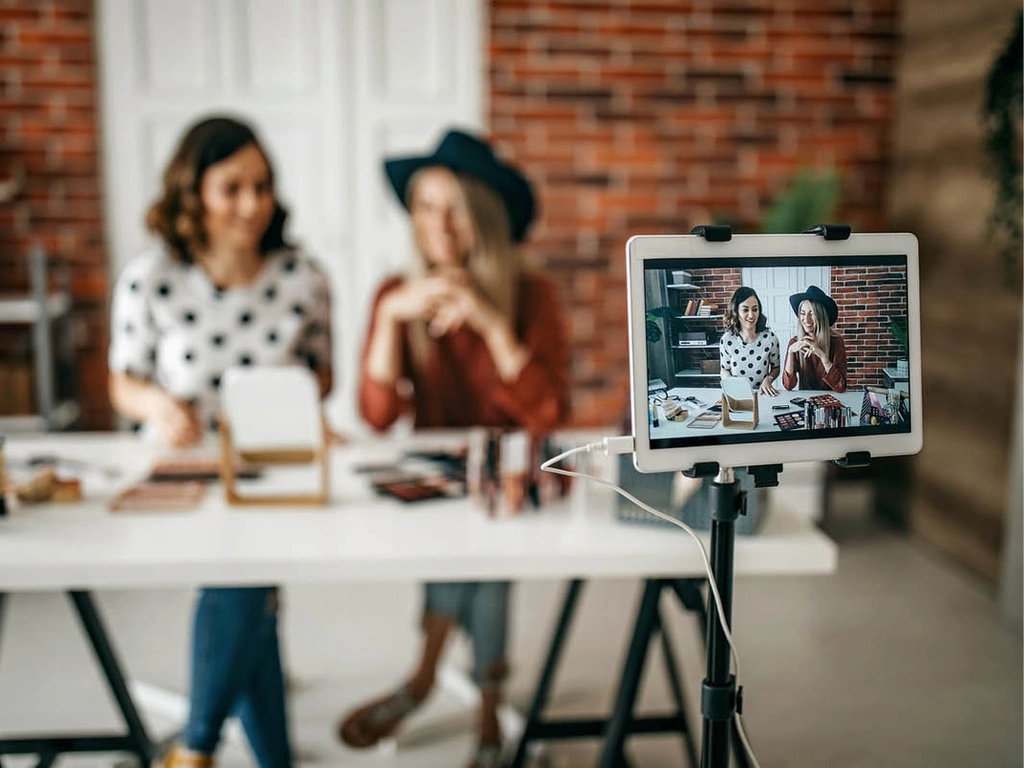Six takeaways for hacking hospo Instagram
Whether you’re behind the bar, front of house running the floor, or a hospo entrepreneur about to spread their wings, one part of your job has become more important than ever — and perhaps without you knowing it.
Social media. Whether you love it or loathe it, it has become an asset to those hospo professionals who know how to wield it, opening doors to new career opportunities and building awareness of their brands.
That was the topic for an in-depth workshop for scholars in The Scholarship from The Blend. Hosted by Sharz Shabani Pour, the founder of Refine Marketing and someone with 20 years experience in the sales and marketing game, the scholars were treated to Instagram hacks to help them up their personal branding game on social media.
Just in case you’re not convinced of the need for a considered social media strategy, Shabani Pour shared some stats with the Scholars.
Showing how widespread social media use is, Shabani Pour says that 79.9 percent of the Australian population uses social media, and some 40 percent of our waking hours are spent on these apps. (That is a lot of time!)
When it comes to hospitality, social media is vital. Some 66 percent of people take photos of their food, and some 51 percent of people will get recommendations on where to go — whether it’s a restaurant or a bar — from posts on their friends Instagram profiles.
That role is heightened even further when you consider that before visiting a venue for the first time, did you know 90 percent of people look at the venues Instagram profile first?
This just goes to show how important it is to do social media well for hospitality-based brands.
It’s not just for venues, either. Your social media profile is part and parcel of your own personal branding, and, says Shabani Pour, personal branding is becoming less about getting an edge over others these days; instead, it’s fast becoming an essential requirement.
Below, six key takeaways from Sharz Shabani Pour’s workshop, Elevate Your Brand, as part of The Scholarship from The Blend.

1. What is your brand identity?*
What is a brand identity? It’s something we’ve written about before, but it bears repeating. As Shabani Pour says, your brand identity — whether you’re an individual or a brand — is what people say about you when you’re not in the room.
So how do you find out what your own brand identity is? You can take this in two approaches.
For Personal Brands, ask the following questions: What are your unique skills? How do you want to be perceived? What so you care about?
For venues and brands, the questions are similar: What is your unique point of difference? What are your brand values? What’s your brand’s personality and tone of voice?
2. How do you get discovered by your ideal audience?
It’s pretty simple. If the content you post is relevant to the audience, they’ll follow you. If they engage with the content they see, the algorithm will serve more of your stuff to them.
But what makes for engaging content? Shabani Pour says that engaging content is that which is of high value to your audience, relevant to them, and posted on a consistent basis.


3. Your profile is your first impression
In social media as in life, first impressions matter. Potential followers make a split second decision on whether or not to hit that follow button, so you want to make this first impression count whether your looking after your own personal account, or for a brand.
Let’s take a look at Shabani Pour’s advice for personal accounts first.
- Your profile picture should be clear, it should be recognisable, and ideally it should be a photo of your face.
- Your bio name should be your full name or the name by which people know you — this is the searchable part of the Instagram app and it’s how people will look you up.
- In your story highlights, share the things that you find interesting, your experiences and projects you’re involved in.
- Don’t post too many, just the ones that are going to be most valuable to your desired audience.
For venue brands:
- Your logo should be your profile picture, and it’s useful to include a keyword in your bio name along with the business name.
- You’ll want to include any call to actions you desire in the info box, and either the link to your website or if you have more elements you’d like to link to, a link to your linktree page.
- In the story highlights section, this is where venues ought to showcase their main offering, the atmosphere of the place — you want to have answers for the sorts of common questions people usually want answered before visiting a bar or a restaurant for the first time.
- Don’t forget the stat up the top: before visiting a venue for the first time, 90 percent of people look at the venues Instagram profile first.
Whether you’re using a personal account or one for business, your first nine posts should reflect what your bio is about — what you are about, in fact.
4. You want to post with purpose
The biggest mistake Shabani Pour often sees isn’t posting too little (or too much); don’t post without a purpose. It’s for this reason that she advises sticking to a content schedule that you can manage.
There are two schools of thought on how often you should post if you want to grow the audience for your account, Shabani Pour says. The first recommends posting every day to create growth. This is great if you have a lot of content ready to go and can keep up with the schedule with someone dedicated to managing the account.
But for most people this won’t be possible. Shabani Pour takes a different approach, favouring quality over quantity. Aim for consistency, even if it’s one or two posts a week. The most important thing to remember is to post with purpose.
Don’t post something just because you feel the need to post everyday. Shabani Pour says that good Instagram accounts combine three broad content pillars in one cohesive content strategy.
Those three pillars are: promote, educate and connect. Shabani Pour recommends forming your content from one of these three pillars.

Promote: for personal accounts, this is where you’ll want to put your projects, your experience, any workshops and events you do, and your collaborations. For brand accounts, this might be your food and beverage offering, your events, the atmosphere of your venue. Any press you receive and post would also fall under this category.
Educate: the posts which fall under this pillars are the type with which both personal accounts and business accounts share expertise, how to’s and other useful information that can benefit the audience. For venue accounts, it might also be the type of post which explains more about your products.
Connect: these posts aren’t just about you, but posts in which you share achievements with others, give shout outs, and spotlight the people you think are doing great work and who you think your audience should know about. For venue account, this can be behind the scenes content, staff shout outs, and user generated content from your patrons.
Whichever pillar your posts are fitting into, keep creative, and mix things up — social media isn’t a set and forget operation.

5. How can I know what content to create to grow my ideal audience?
Like any endeavour, it pays to do your research.
Shabani Pour suggests finding 10 accounts that have your ideal audience, accounts which have a high level of engagement. Collate these, and then identify their viral content — the posts which have the highest levels of engagement — i.e. likes and comments — the posts which stand out.
Select 10 of these posts which you feel you’ll best be able to emulate and which will work with your values, and then analyse them. What are the formats and styles they use, what are the topics they cover. How long are the captions, what is the style of writing they employ and are there any calls to action? Which hashtags do they employ and how many?
Sort these into content pillars and use them for inspiration in your own work.
6. Put effort into your captions
Yeah, yeah, Instagram is about the photos. And the video. And the reels and the stories... it’s a visual platform. But that doesn’t mean you shouldn’t take time to compose great captions for your posts.
Why? Because a great caption can lure someone in. And get them engaging with your posts more. They can increase the crucial dwell time that a user spends on your content, which in turn boosts your results in the algorithim.
Shabani Pour suggests leading with a great a hook to pull your audience in, and to employ any call to actions you need.

